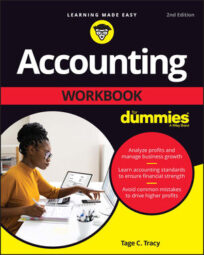Having your business reach a profit is important; if it doesn’t, sooner or later the business will fail. As a business manager, you want to keep a close eye on the financial statements and make the necessary (and legal) accounting adjustments to your financial records as needed. These helpful tips can help you make the necessary adjustments to your business’s net income, eye two different profit analysis models, and communicate the reports to your managers.
Adjustments to net income for determining sash flow from operating activities
Accounts receivable, inventory, and prepaid expenses are operating assets used in the profit-making process.
Accounts payable and accrued expenses payable are operating liabilities used in the profit-making process.
Operating asset increases and operating liability decreases are negative adjustments (decrease cash flow from operating activities)
Operating asset decreases and operating liability increases are positive adjustments (increase cash flow from operating activities)
Depreciation and amortization expenses are positive adjustments (increase cash flow from operating activities)
Cardinal Rule: Make all cash flow adjustments to net income; do not simply add back depreciation and amortization, which could be seriously misleading.
Two profit analysis models for management decision making
Contribution margin minus fixed expenses model:
| Sales price | $100 |
| Less variable costs per unit | $60 |
| Equals contribution margin per unit | $40 |
| Times annual sales volume, in units | 120,000 |
| Equals total contribution margin | $4,800,000 |
| Less fixed operating expenses | $3,000,000 |
| Equals operating profit | $1,800,000 |
Excess of sales over breakeven model:
$3,000,000 annual fixed operating expenses ÷ $40 contribution margin per unit = 75,000 units breakeven point (volume)
| Annual sales volume for year, in units | 120,000 |
| Less annual breakeven volume, in units | 75,000 |
| Equals excess over breakeven, in units | 45,000 |
| Times contribution margin per unit | $40 |
| Equals operating profit | $1,800,000 |
Guidelines for internal accounting reports to managers
When you’re preparing financial information for your business’s managers, follow these tips:
Follow the organizational structure (responsibility accounting)
Orient your report based on whether organization unit is a profit center or a cost center
Know the mind of the manager
Highlight significant factors and deemphasize non-significant factors

